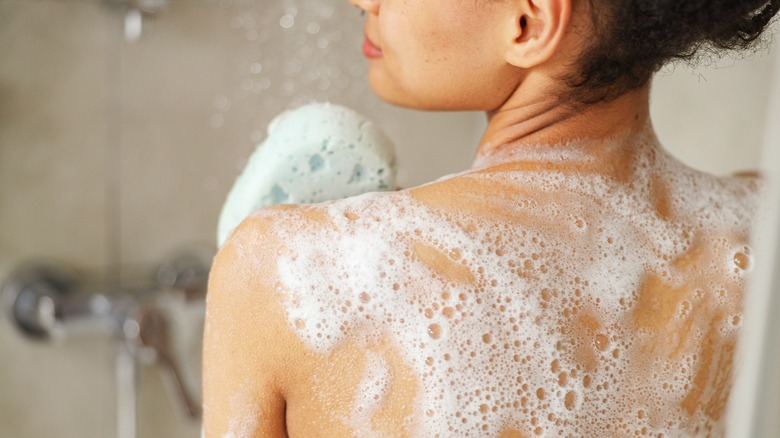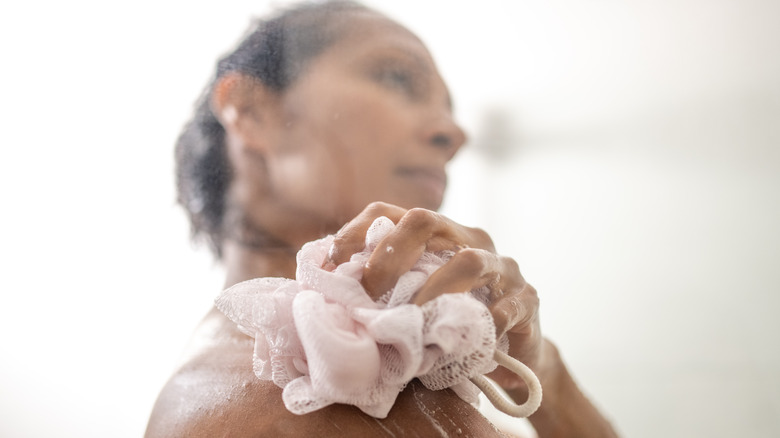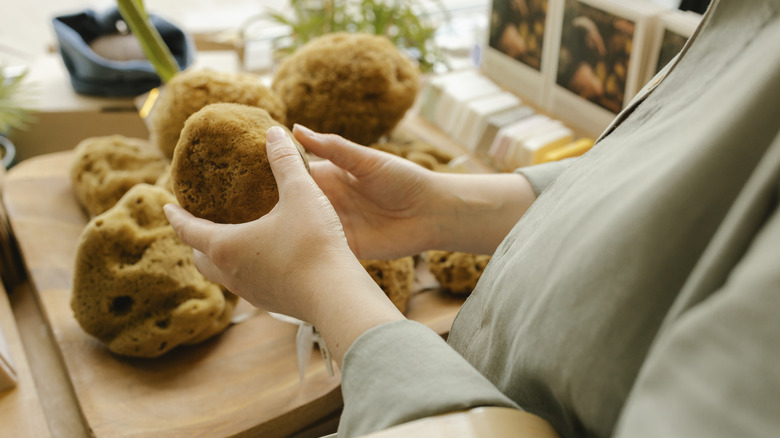The Most Hygienic Way To Wash Your Body In The Shower
We may receive a commission on purchases made from links.
When it comes to showering, a fast-thinking well-being industry has given us countless options for keeping ourselves clean. Not only do we have an array of body washes (including luxury options and those specifically designed for certain skin types), scrubs, and soaps to choose from, but we're also spoiled for choice in terms of tools to use them with. Loofahs and sponges are among the most popular options, but is there anything better than going the old-fashioned route and simply washing your body with your hands?
According to Dr. Brendan Camp, who's double board-certified in dermatology and dermatopathology, using your hands remains the most hygienic way to clean yourself in the shower. In an exclusive interview with Glam, the dermatologist reveals that popular body-washing aids like loofahs, washcloths, and sponges can actually harbor bacteria and end up doing more harm than good when your end goal is to get clean. If you're not regularly switching up your shower accessories, then washing with your hands is the safest option.
The danger of loofahs and washcloths
Loofahs and washcloths may visually add to the serene aesthetic of your bathroom, and they might also feel pleasant to wash with. But unfortunately, they can develop bacteria due to the humid bathroom environment — a common reason why some experts advise stopping the use of loofahs altogether. "Mold and bacteria can develop on fomites in the bathroom because warm temperatures and moisture create a favorable environment for proliferation," Dr. Brendan Camp tells us exclusively, adding that if your washing accessories remain damp after your shower, they can provide the perfect opportunity for microorganisms to grow. "If using a washcloth or loofah that has not been used for a long time, there is a risk it could be contaminated and lead to a skin infection or folliculitis." Washing with your hands, by comparison, comes with none of the associated risks.
However, Dr. Camp admits that there are still benefits that come with using these washing accessories. "Loofahs and washcloths can hold soaps and cleansers for longer periods and facilitate exfoliation," he says. If you have your heart set on using a bathroom accessory like a loofah or washcloth, there are some actions you can take to ensure it stays microorganism-free.
How to use a loofah or washcloth hygienically
Washing your body with your hands may be the most hygienic cleansing method, but it doesn't feel as nice as a lathered-up sponge. Certain places, like your back, may also be difficult to reach without an accessory. The good news is you can still use these tools as long as you practice hygiene maintenance. "In general, loofahs should be replaced about once per month," Dr. Brendan Camp shares exclusively with Glam. "Washcloths should be cleaned after every one to three uses." It's also advisable to store these accessories away from the damp conditions of your bathroom.
In terms of choosing the best washing accessory, Dr. Camp recommends the Aquis Double-Sided Exfoliating & Cleansing Back Scrubber, available on Amazon. "This product makes washing difficult-to-reach areas, like the back, easy," he says. "In addition, one side is coarse and the other fine to accommodate different levels of exfoliation, and can be cleaned in the washing machine." Dr. Camp is also a fan of Frontgate Resort Collection Bath Towels, which are "soft, plush, and gentle on the skin."


